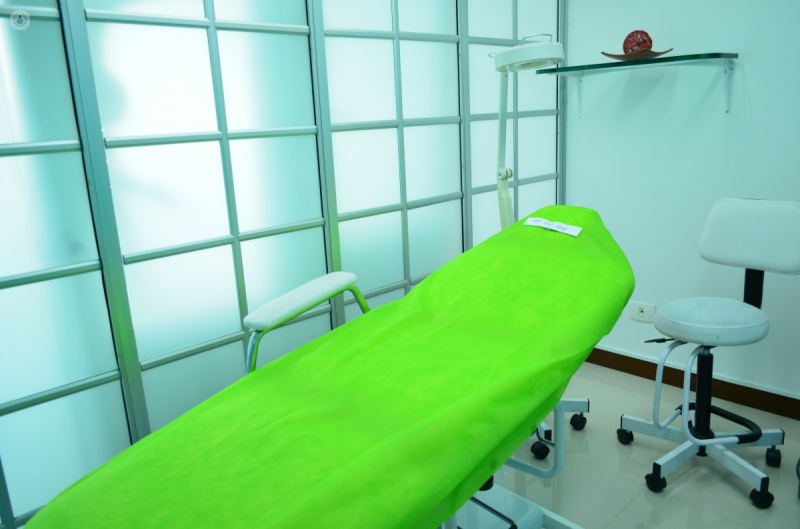

What is it?
Sigmoidoscopy is a test to examine the rectum and the lining of your sigmoid colon - the lower part of your large intestine. It is carried out to see if there’s any potential abnormal growths of tissue, also known as polyps, or to see if there is a tumour in its early stage.
Using this test, the doctor can verify and (if need be) remove polyps which could grow to become tumours at the same. It has been estimated that sigmoidoscopy can lower your chances of developing large intestine cancer by 45%.

What is it for?
You may need to have a sigmoidoscopy if you are having persistent diarrhoea (with traces of blood or mucus in your stool), changes to or irregular bowel habits, persistent abdominal pain or possible chronic anaemia.
What does it involve?
Sigmoidoscopy involves passing a very small, flexible endoscope (about 1 cm thick) through the anus. The endoscope has a camera and a light at its end. The probe allows the gastro-enterologist to accurately examine the internal lining of the intestine. Your doctor will be able to see if there are any polyps and take a small tissue sample for further analysis. The test takes around 10 minutes in total.
How can I prepare for it?
Preparing for this procedure is quite simple. To make sure the doctor has a clear view of your colon, it must be completely empty, so that any polyps or lesions will be clearly visible. You may have to take an oral laxative the night before or up to six hours before the exam. You can usually eat light soups and drink water before the operation as these will not interfere with the test.
What does it feel like during the procedure?
Sigmoidoscopy doesn’t usually require any anaesthetic, as it will only cause a mild discomfort. You may be prone to pain due to some potential anatomical peculiarities, such as a very long intestine, scarring due to previous surgery or inguinal hernia. In this case, your doctor will give you something to relive the pain.
Once the test is over, you can go back home without any problems. There may be some side effects, such as some bloating or abdominal cramps. However, these symptoms should not last more than a couple of hours.
Serious complications from sigmoidoscopy are extremely rare (less than 1%) and may involve bleeding or perforation caused by the probe.
What would a “bad” result mean?
At the end of the test, your doctor will be able to give you a result. If nothing suspicious is found, you won’t have to repeat the exam.
However, if the doctor found polyps, they will either be removed during the procedure, or a histological examination will be carried out on a tissue sample collected during the exam. After a couple of weeks, your results will be ready. If the doctor needs to know more, you may be asked to undergo a colonoscopy.
Finally, if a tumour is found, you will be immediately referred to a surgeon.
